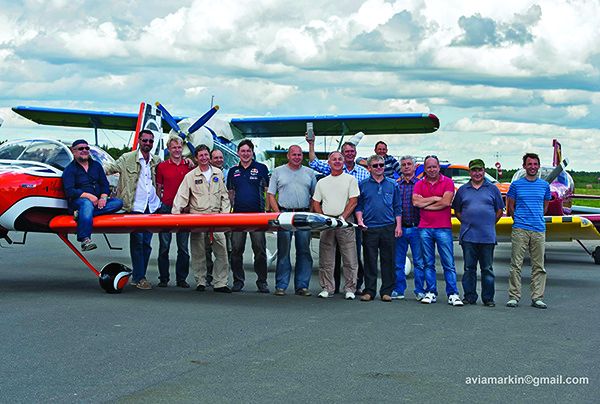Initial reports on the crash of a Beechcraft 95-B55 Baron on June 28, 2013, were depressingly familiar. The aircraft was flying VFR through Broad Pass, near Cantwell, Alaska, and Denali, in instrument meteorological conditions (IMC) when it impacted terrain, killing all three aboard. A pilot who was waiting out the weather at nearby Summit Airport reported the ceiling was 250-300 feet broken and an overcast at 350 feet with fog in the trees, when he saw the Baron fly overhead. The NTSB determined the probable cause was the pilot’s continued visual flight into IMC, “which resulted in an in-flight collision with mountainous terrain.” It happens a lot in Alaska, making this Baron crash easy to dismiss. A closer look at events behind this accident, however, shows there is much more to the story.
The Baron was not flying alone on the day of the crash—it was the lead plane for 18 aircraft that were members of a self-fly air tour group with the company “Let’s Fly Alaska.” The accident pilot, who held airline transport pilot and flight instructor certificates, and had amassed some 4900 hours total time, was the longtime owner and operator of the company and set the day’s route, from Fairbanks to Homer, about 400 miles south, through Denali National Park and Preserve. The other aircraft following him were split in two groups, based on airspeed. According to the “fast group’s” lead pilot, the Baron was about 10 minutes ahead out of Fairbanks. When his group approached Windy Pass, north of the park, it encountered “low clouds, haze and restricted visibility.” Another aircraft in the area radioed that the pass was closed and so all of the aircraft in both groups chose to land at Healy Airport and wait out the weather. There was no radio contact with the Baron.
GROUP TOUR
The impact of any group dynamics on pilot decision-making is complex and difficult to parse. The potential for negative pressure can not be denied however, as evident in a June 30, 1995, crash in Kodiak, Alaska. In that case, the accident aircraft, a PA-32-301 Saratoga flying under FAR Part 135, was fifth in a group of six flying through Buskin Pass, about five miles west of the airport. All of the pilots worked for various local air taxis and commuters, and entered the pass in a line.
Investigators found that the first pilot initially decided not to enter the pass, due to marginal conditions, and was diverting when he heard that the second aircraft, from a rival company, had made it through. He subsequently entered the pass, later reporting to investigators it was legal VFR, and was followed by the third pilot and a fourth, who reported clear conditions. The accident aircraft was about five to seven minutes behind the fourth aircraft when it impacted at the 400-foot level. The pilot who followed him also told investigators he found “good VFR weather” in the pass.
The Kodiak crash was reported by a driver on a nearby road who observed low fog and visibility at the site. A rescuer who arrived within minutes reported that fog was about 30 feet above the wreckage. From the aircraft’s position, investigators determined the pilot was attempting to turn around when he impacted terrain. While several of the pilots in the group told investigators that the weather shifted rapidly, they also insisted it was legal VFR. The accident pilot, who was killed along with his three passengers, was the only one to attempt turning around.
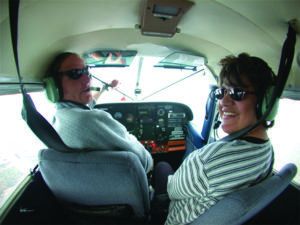
Self-fly air tours are popular yet difficult to research. While there are several companies offering tours around the world, from Africa to Australia to the Canadian Arctic, determining a company’s safety history can be tricky. For example, while writing this article I found that in 2005 a participant in a Let’s Fly Alaska tour crashed in rising terrain in Windy Pass, resulting in the deaths of the pilot and passenger. (Weather was not a factor.)
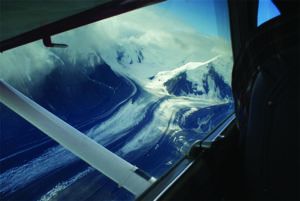
While Let’s Fly Alaska bears no direct responsibility in this accident, or others involving its participants, it does raise questions about the participant selection process and the potential for negative impacts on group decision-making. There were three other aircraft with that accident pilot when he crashed; they had all chosen to fly an alternate route from the one advised but began to climb out after becoming uncomfortable.
The accident pilot impacted terrain at the 5000-foot level. Investigators found he had no record of passing a recent flight review, leaving that part of the Let’s Fly registration blank, but no one had followed up. The group’s owner, who later crashed in the Baron, told investigators at the time that he had been particularly concerned about this pilot as “he flew low and close to terrain.”
VFR INTO IMC
The circumstances of the Kodiak crash were echoed more than a decade later with another group of aircraft flying Part 135 in Alaska, this time near Ketchikan. That accident aircraft, a float-equipped de Havilland DHC-2 Beaver, was the second of three company planes flying cruise ship passengers on tours through Misty Fjords National Monument on July 24, 2007.
While flying through a shallow mountain pass familiar to area pilots, the lead plane told investigators he encountered “low clouds, rain and fog, with a visibility of 2 to 3 miles.” He maintained VFR by descending to about 700 feet. The accident pilot was five to seven minutes behind him, with the third aircraft five minutes further back. The accident pilot gave standard position reports while flying through the area, but the third pilot encountered what he characterized as “a wall of weather” near the pass and chose to divert to an alternate route. The accident airplane was later found impacted on steep terrain at the 2500-foot level near where the third aircraft turned around; the pilot and all four passengers were killed.
Both the Kodiak and Ketchikan accident pilots were recent hires, which likely made them more susceptible to following the decision-making of those they flew with. The Kodiak pilot had less than 1600 total hours and had been with his company less than six months. The Ketchikan pilot had over 5000 hours but only 178 in make and model; he was hired about three months prior to his crash. In both cases, the NTSB found the pilots to be at fault for their decisions to fly VFR into IMC. In the case of the 2007 crash, and perhaps reflecting a more nuanced view of probable cause by investigators, the FAA was cited as a contributory factor for its failure to provide adequate surveillance of the operator.
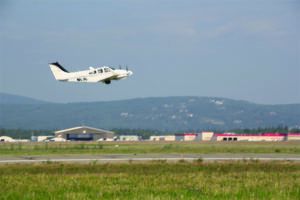
Longtime readers will recall the FAA’s PAVE memory device, used in its risk-management training materials and representing the Pilot, the Aircraft, the enVironment and External pressures. While the agency’s Risk Management Handbook (RMH, FAA-H-8083-2) does not specifically mention peer pressure, it’s clear that peer-generated external factors can adversely influence a pilot’s decision-making.
For example, the RMH states, “Management of external pressure is the single most important key to risk management because it is the one risk factor category that can cause a pilot to ignore all other risk factors.” The RMH recommends adopting personal standard operating procedures (PSOPs), examples of which include:
* Allow time on a trip for an extra fuel stop or to make an unexpected landing because of weather.
* Have alternate plans for a late arrival or make backup airline reservations for must-be-there trips.
* For really important trips, plan to leave early enough so that there would still be time to drive to the destination.
* Advise those who are waiting at the destination that the arrival may be delayed. Know how to notify them when delays are encountered.
* Manage passenger expectations. Ensure passengers know that they might not arrive on a firm schedule, and if they must arrive by a certain time, they should make alternative plans.
COMPLICATIONS
The Baron crash described earlier would seem to suggest the presence of a similar degree of potential pressure, both professionally, as the tour company’s owner was compelled to stay on schedule, and also personally, as the lead aircraft with a large group dependent upon him for guidance. As investigators began to research Let’s Fly Alaska, however, it became clear that the dynamics in the Baron’s cockpit were far more complicated than expected.
The pilot and aircraft owner held a third class medical, dated February 2012, but in a statement provided by his widow, investigators learned that he “considered himself medically unqualified” to serve as PIC after an accident in the summer of 2012. He also received chemotherapy for cancer treatment in the fall of that year. She explained that he needed a pilot aboard who qualified as PIC in the Baron (which she stated he had never flown by himself), to satisfy the FAA and insurance requirements. He arranged to have a second pilot and his fiancée accompany him in the Baron on the June Alaska trip, offering it as thanks for brokering and delivering the aircraft. The second pilot held commercial and flight instructor certificates, and had flown an estimated 10,000 hours.
The pilot’s widow, who was co-owner of the company, provided signed registration and “waiver and liability release” forms for Let’s Fly Alaska from the previous fall that listed the second pilot as a PIC. But according to the lead pilots on the trip, the second pilot was not aware of his position as official PIC in the cockpit. One of them told investigators, “Only afterwards do we now understand the only person who didn’t understand he was PIC was [the second pilot]. It was clearly visible to the rest of us that [the Baron owner] most likely was not in good enough health to act as PIC.”
All of this became more significant as witnesses told investigators the Baron owner was “terrifying” in the air. Originally, he invited the lead pilot of the fast group to fly with him but that pilot declined, later telling investigators “he had observed [the Baron owner] push weather in the past, and would not fly with him.”
The deceased second pilot contacted his brother the night before the crash and registered serious concerns about the Baron owner, saying he was “obnoxious, arrogant and abrasive and way too risky in his flying.” He was concerned about low-level flying and stated that he “gets down right on the treetops through passes that are way to [sic] narrow.” He was urged to abandon the tour and come home immediately with his fiancée, but refused. His reasons for this decision were never shared with his sibling, nor with other pilots on the trip to whom he voiced similar concerns. Contrary to all of his training, the second pilot got back into the Baron with a pilot he did not trust and in the end, was unable save himself or the woman he loved.
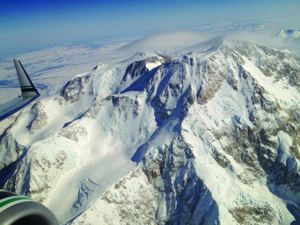
Denali National Park and Preserve is home to the tallest mountain in North America. Formerly Mt. McKinley, it was returned to its original name, Denali, by President Obama in 2015.
Aviation on the mountain has a long history, back to the first overflight in 1930. In 1932, bush pilot Joe Crosson made the first landing on the mountain, at the 5600-foot level, in a Fairchild 71, with members of the Mt. McKinley Cosmic Ray Expedition. Mountaineering and aviation have long gone hand-in-hand on Denali where a base camp is established every season at about 7000 feet on the Kahiltna Glacier.
There are no special permissions required to traverse the park or land at McKinley Park Airstrip. See tinyurl.com/SAF-Denali for more information on flying Denali.
DOMINANT PERSONALITY
Pressure and stress in aviation has been studied repeatedly by all manner of agencies and academics. They are not unknown sources of concern and yet, other than avoiding situations that present pressure and stress, there is no appreciable solution to the problem. When joining a group determined to make a choice that creates concern for a single pilot, it is exceedingly difficult for that one pilot to stand up and choose an alternative.
In both the Kodiak and Ketchikan accidents, other pilots considered and even selected alternate routes with no negative ramifications, but both of the accident pilots, perhaps because of their reduced experience, did not feel comfortable asserting themselves in a similar fashion.
In the case of the Beech Baron crash, the two group-leading pilots had no problem landing their airplanes even after the tour owner continued. But their joint refusal to submit to his choices, which was likely bolstered by the multiple aircraft that looked directly to them for decision-making, further isolated the second pilot who was in the cockpit with him.
Even though that second pilot had greater experience, his reliance upon the owner to make all the trip’s arrangements and acceptance of the tour as a gift placed him in a position of gratitude. He told one of the pilots that his fiancée had “talked him out of saying anything so as to not create any more friction in the cockpit.” The dominant personality was thus able to negatively assert his risky decisions right up to the moment of impact, when it was too late to do anything to counter him.
Colleen Mondor is a private pilot with degrees in Aviation Management, History and Northern Studies. She has written about, and worked in, Alaska aviation for 25-plus years.

